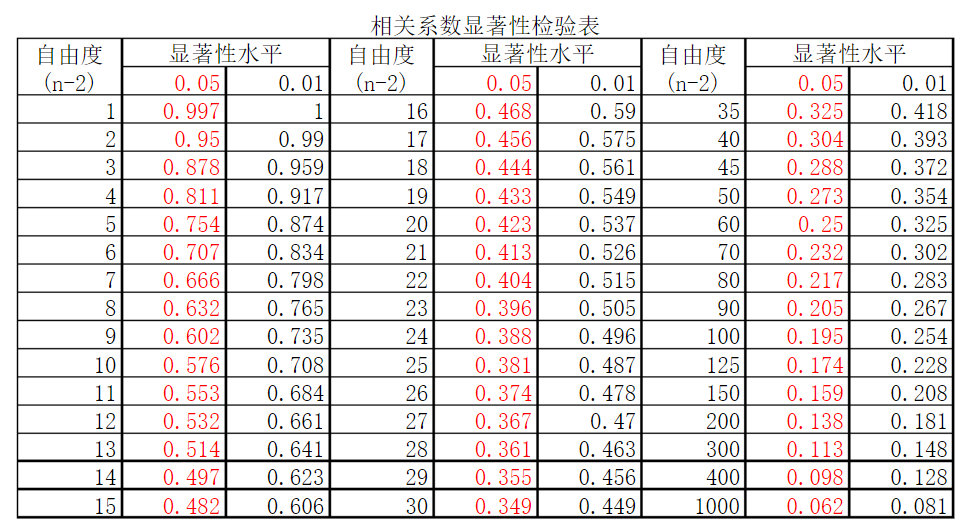整理ncl中的常用数学函数,如取整、平均、标准化
在ncl中进行计算时,注意缺测和小数。例如 a=1/12344 得到的结果是整数0,但如果是 a=1.0/123456 得到的则是浮点数,结果不为0.
1 数学函数
a = b^2 ;平方表述
a = sqrt(b) ;计算开方
a = fspan(start, finish, number) ;Creates an array of evenly-spaced floating point numbers
b = ispan(start, finish, spacing) ;Creates an array of equally-spaced integer, long, or int64 values.
srand(seed) ;Establishes a seed for the rand function. send is a positive integer value to use as the seed for rand.
c = rand() ;Returns a pseudo-random integral value in the range of 0 <= return_val <= 32766.只能生成一个数
random_setallseed(iseed1, iseed2) ;iseed1 and iseed2 are any integer between 1 and 2,147,483,562 (default is 1234567890).
;Sets initial seeds for random number generators.
c1 = random_normal(av, sd, (/10,100/)) ;Generates random numbers array using a normal distribution.
c2 = random_normal(av, sd, (/10,100/)) ;Generates random numbers array using a normal distribution.
If the user does not explicitly set initial values for seeds via random_setallseed, those initial seeds will be set to default values. It is recommended that the user specify these seeds.
- 伪随机数并不是假随机数,这里的“伪”是有规律的意思,就是计算机产生的伪随机数既是随机的又是有规律的。
- 随机种子来自系统时钟,确切地说,是来自计算机主板上的定时/计数器在内存中的记数值。
- 随机数是由随机种子根据一定的计算方法计算出来的数值。所以,只要计算方法一定,随机种子一定,那么产生的随机数就不会变。也就是说,伪随机数也是某种对应映射的产物,只不过这个自变量是系统的时间而已
- 如果你每次调用srand()时都提供相同的种子值,那么,你将会得到相同的随机数序列
2 统计函数
2.1 相关系数
esccr(x,y,mxlag) or cova = esccv(x,y,mxlag) 计算x和y最右边维的交叉时滞相关或协方差,0 <= mxlag <= N/4。如果要算超前滞后相关,需要进行两次运算,如下所示:
mxlag = 9
x_Lead_y = esccr(x,y,mxlag)
y_Lead_x = esccr(y,x,mxlag) ; switch the order of the series
ccr = new ( 2*mxlag+1, float)
ccr(0:mxlag-1) = y_Lead_x(1:mxlag:-1) ; "negative lag", -1 reverses order
ccr(mxlag:) = x_Lead_y(0:mxlag) ; "positive lag"
esacr(x,mxlag) ,计算时滞自相关系数
escorc(x,y),只能计算Pearson同时线性交叉相关
run_cor(x,y,time,wSize),计算滑动相关。使用该函数需要调用一个脚本:
load "$NCARG_ROOT/lib/ncarg/nclscripts/contrib/run_cor.ncl"

2.2 回归系数
利用 ` regCoef_n ( ts, vars, dim_ts, dim_vars ) ` 函数计算线性回归系数(利用最小二乘法),允许缺测,会将 t 统计量作为属性输出,此时若要对回归系数做显著性检验,就需要根据t统计量计算 a two-tailed probability (prob),关于该检验的具体介绍 。
该函数会以属性形式返回四个参数:截距 yintercept, 用于显著性检验的t统计量 tval, 估计回归系数的标准误差 rstd, 样本数 nptxy
如果时间序列 ts 的单位为 K, 回归场 vars 的单位为 m,那么回归系数的单位是 m/k。该函数在计算回归系数前不会讲时间序列标准化,如果需要标准化,则需要作者自己处理。
; 数据维数介绍:ts(6,neval,nyear), vars(nyear,nlat,nlon), var(6,neval,nlat,nlon)
var := regCoef_n(ts, vars, 2, 0) ;关于时间维做回归
copy_VarCoords(vars(0,:,:), var(0,0,:,:))
printVarSummary(var)
; 回归系数的显著性检验
tval := onedtond(var@tval ,(/6,neval,nlat,nlon/)) ;t统计量
df := onedtond(var@nptxy,(/6,neval,nlat,nlon/)) ;样本数
b = tval
b = 0.5
prob := betainc( df/(df+tval^2), df/2.0, b )
prob := mask(prob,prob.lt.siglvl,True)
copy_VarCoords(vars(0,:,:), prob(0,0,:,:))
2.3 方差与标准化
;序列标准化
avar = dim_standardize_n(var,opt,dim) ;得到标准化序列,忽略缺测
;opt = 1 用the population standard deviation(除以不包含缺测的样本总数)计算
;opt = 0 用the sample standard deviation(除以不包含缺测的样本总数-1)计算
;计算标准差方差
stdd = dim_stddev_n(var,dim) ;计算样本标准差,即除以不包含缺测的样本总数-1
vari = dim_variance_n(var,dim) ;计算无偏差估计的方差 the unbiased estimates of the variance,即除以不包含缺测的样本总数-1
; 上述计算的方差和标准差都是无偏差估计的方差,如果想要计算方差(直接除以样本总数)
opt = 1
avar = dim_standardize_n(var,opt,dim) ;得到标准化序列,忽略缺测
vari = dim_avg_n(avar^2,dim) ;标准化序列的方差是1
depart = var-conform(var,dim_avg_n(var,dim),(/1,2,3/))
vari = dim_avg_n((depart)^2,dim)
avar = depart/sqrt(vari) ;得到标准化序列
3 取整函数
floor(values) ;Returns the largest integral value less than or equal to each input value.
;values 可以是一个数或一个数组,此外,若输入的是double,则输出的也是double
;若要得到整数,需用 toint(floor(values))
ceil(values) ;Returns the smallest integral value greater than or equal to each input value.
;values 可以是一个数或一个数组,此外,若输入的是double,则输出的也是double
;上述函数可以用来设置纵坐标的取值范围
res@trYMinF = toint(floor(min(var)))
res@trYMaxF = toint( ceil(max(var)))
round(values,opt) ;Rounds a float or double variable to the nearest whole number.类似于四舍五入
;valus可以是任意纬度
;opt=0: return values of the same type as x
;opt=1: return values of type float
;opt=2: return values of type double
;opt=3: return values of type integer
4 标记函数
x = mask(y, y.lt.100,False) ;会得到一个和y数组一样大小的x数组,x中相应位置上的y数值若小于100会被设为缺测值,若大于100则是y中该数字。
x = mask(y, y.lt.100,True ) ;与上例相同,只是此时是数值大于100的被设为缺测值。
mask 函数最后一个逻辑值为False,表示保留逻辑运算为False的数字。True则为保留逻辑运算为True的数字
 支付宝鼓励
支付宝鼓励  鸡腿鸡腿
鸡腿鸡腿